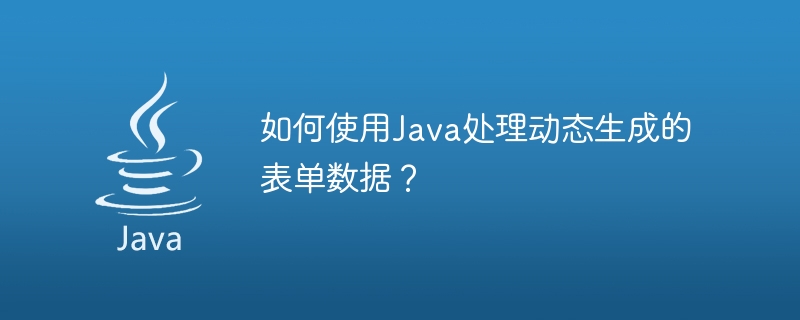

How to use Java to process dynamically generated form data?
With the development of the Internet, more and more websites and applications need to support dynamically generated form data. Dynamically generated forms are typically generated by front-end code and then sent to the back-end server via HTTP requests. The backend server needs to be able to correctly receive and process this dynamically generated form data. In this article, we will learn how to handle dynamically generated form data using Java.
First, let’s take a look at how to generate dynamic forms on the front end. Suppose we have a web page with a button on the web page. When the button is clicked, a form will be dynamically generated. We can use JavaScript to implement this function, as shown below:
function generateForm() {
var form = document.createElement("form");
form.setAttribute("method", "post");
form.setAttribute("action", "/submit-form");
var input1 = document.createElement("input");
input1.setAttribute("type", "text");
input1.setAttribute("name", "input1");
form.appendChild(input1);
var input2 = document.createElement("input");
input2.setAttribute("type", "text");
input2.setAttribute("name", "input2");
form.appendChild(input2);
document.body.appendChild(form);
}The above code will dynamically generate a form when the button is clicked, containing two text input boxes, and set the submission address of the form to "/ submit-form".
Next, we need to process this dynamically generated form data in the Java backend. We can use the Spring MVC framework to simplify the process of handling form data. First, we need to introduce the Spring MVC dependency into the project:
<dependency> <groupId>org.springframework.boot</groupId> <artifactId>spring-boot-starter-web</artifactId> </dependency>
Then, we can create a controller class to receive the form data and process it accordingly. The sample code is as follows:
@Controller
public class FormController {
@PostMapping("/submit-form")
public String handleSubmitForm(@RequestParam("input1") String input1, @RequestParam("input2") String input2) {
// 处理表单数据
System.out.println("Input 1: " + input1);
System.out.println("Input 2: " + input2);
// 返回结果页面
return "result";
}
}In the above code, the handleSubmitForm method uses the @RequestParam annotation to receive form data and process the data. The processing method can be programmed according to specific needs.
Finally, we can create a results page to display the results of the form processing. In Spring MVC, we can use template engines such as Thymeleaf to create pages. The sample code is as follows:
<!DOCTYPE html>
<html xmlns:th="http://www.thymeleaf.org">
<body>
<h1>表单处理结果</h1>
<p th:text="'Input 1: ' + ${input1}"></p>
<p th:text="'Input 2: ' + ${input2}"></p>
</body>
</html>In the above code, Thymeleaf's template syntax is used to dynamically display the results of form processing.
Through the above steps, we can use Java to process dynamically generated form data. When the user clicks a button to generate a form and submit data, the Java backend can receive and process the data through the Spring MVC framework, and perform corresponding processing according to actual needs.
In addition to the Spring MVC framework used in the above examples, there are many other Java frameworks that can be used to process dynamically generated form data, such as Servlet, JSP, etc. Choosing the appropriate framework depends on the specific needs of the project and personal preference.
I hope this article can help readers understand how to use Java to process dynamically generated form data, and I wish readers can achieve better results in their daily development work!
The above is the detailed content of How to handle dynamically generated form data using Java?. For more information, please follow other related articles on the PHP Chinese website!




